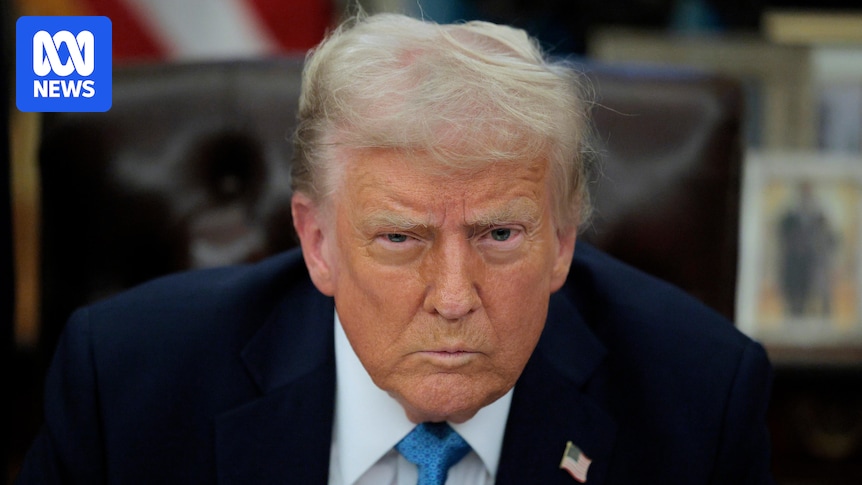Trump-Era China Tariffs End: Did They Really Curb Consumer Spending?
Editor’s Note: The official end of Trump-era tariffs on Chinese goods has been announced, prompting renewed discussion on their impact on consumer spending. This article explores the complex relationship between tariffs, inflation, and consumer behavior.
Why This Matters: Unpacking the Tariff Legacy
The termination of the Trump administration's tariffs on Chinese goods marks a significant shift in US trade policy. These tariffs, implemented between 2018 and 2020, aimed to protect American industries and reduce the trade deficit with China. However, their impact on consumer spending remains a subject of intense debate, with economists presenting differing viewpoints. Understanding this impact is crucial for comprehending current inflationary pressures and predicting future economic trends. This article will analyze the arguments surrounding the effects of these tariffs, examining their influence on consumer price indexes (CPI), retail sales, and overall economic growth. We’ll explore whether the tariffs truly curbed the consumer spending spree or simply shifted spending patterns.
Key Takeaways
| Factor | Impact (Debated) | Evidence |
|---|---|---|
| Consumer Prices (CPI) | Increased due to higher import costs | CPI data showing inflation spikes during tariff periods |
| Retail Sales | Potentially dampened, but complex relationship | Fluctuating retail sales data; need for deeper analysis |
| Consumer Behavior | Shifted towards domestically produced goods (arguably) | Anecdotal evidence and limited market research |
| Overall Economic Growth | Possibly slowed, long-term effects uncertain | Various economic models and analyses yield differing conclusions |
Trump-Era China Tariffs: A Deeper Dive
The imposition of tariffs on hundreds of billions of dollars worth of Chinese goods undeniably increased the cost of imported products. This directly impacted consumer prices, contributing to inflation. However, the extent to which this curbed consumer spending is debatable. While some argue that higher prices forced consumers to reduce spending, others point to continued growth in certain sectors, suggesting a shift in consumption rather than a complete slowdown.
Inflationary Pressures & Consumer Choices
The inflationary impact of the tariffs is generally accepted. However, the effect wasn't uniform across all goods. Some sectors experienced significantly higher price increases than others. This variation in price impact influenced consumer choices, prompting shifts in purchasing habits. Consumers may have substituted cheaper alternatives, bought less, or opted for domestically produced goods. Further research is needed to quantify the precise extent of these behavioral changes.
The Role of Other Economic Factors
It's crucial to note that the impact of tariffs wasn't isolated. Other factors like the COVID-19 pandemic, supply chain disruptions, and fluctuating oil prices also influenced consumer spending. Attributing changes solely to the tariffs presents a significant methodological challenge. Analyzing the interplay between these multiple forces requires sophisticated econometric modeling.
The Impact on Specific Sectors: A Case Study
Example: Electronics
The imposition of tariffs on electronics likely increased prices for consumers. However, demand for electronics remained relatively strong during the period. This suggests that the price increases did not entirely deter consumers, although it’s likely that higher prices led some consumers to delay purchases or choose lower-cost alternatives.
Example: Apparel & Footwear
The apparel and footwear sectors also saw price increases due to the tariffs. The effect on consumer spending in this sector was likely more pronounced, as consumers may have been more sensitive to price changes for non-essential items.
People Also Ask (NLP-Friendly Answers)
Q1: What were the Trump-era China tariffs?
A: These were taxes imposed by the Trump administration on various goods imported from China, intended to protect American industries and reduce the trade deficit.
Q2: Why did the Trump administration impose tariffs on China?
A: The stated goals were to protect American businesses from unfair competition, address intellectual property theft concerns, and reduce the US trade deficit with China.
Q3: How did the tariffs affect consumers?
A: The tariffs primarily led to higher prices for imported goods, potentially contributing to inflation and impacting consumer spending patterns, although the precise effect remains debated.
Q4: What are the long-term effects of the tariffs?
A: The long-term economic consequences are still unfolding and require further analysis, but potential impacts include altered trade relationships, changes in global supply chains, and lingering effects on inflation.
Q5: Are the tariffs still in effect?
A: No, the Trump-era tariffs on Chinese goods have been officially ended.
Practical Tips for Understanding Trade Policy Impacts
- Monitor inflation data: Keep an eye on the Consumer Price Index (CPI) to track the cost of goods and services.
- Analyze retail sales reports: Follow reports on retail sales to assess consumer spending trends.
- Read economic analyses: Consult reports from reputable economic organizations and research institutions.
- Consider global events: Remember that economic impacts are rarely isolated; global events influence trade and spending.
- Stay informed about trade policy: Follow developments in trade policy to understand potential future effects.
- Support domestic businesses: Consider purchasing goods made in the USA to boost the domestic economy.
- Diversify your investments: Diversification can help mitigate risk in volatile economic times.
- Be a responsible consumer: Make informed decisions when purchasing goods and services.
Summary
The impact of the Trump-era tariffs on Chinese goods on consumer spending remains a complex and contested issue. While they undoubtedly contributed to inflation, the extent to which they directly curbed consumer spending is difficult to definitively determine. Further research and analysis are needed to fully comprehend the long-term economic consequences.
Closing Message
The end of these tariffs marks a new chapter in US-China trade relations. As we move forward, carefully analyzing the lessons learned from this period is vital for developing more effective and less disruptive trade policies in the future. What do you think the next major economic challenge will be?
Call to Action
Stay informed about economic developments! Subscribe to our newsletter for insightful analysis and updates on global trade and finance. [Link to Newsletter Signup] Share this article with your network to spark a discussion on the complex relationship between tariffs and consumer behavior.

